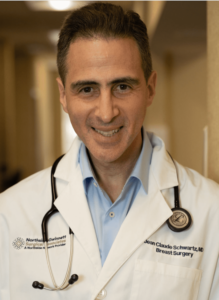Fax: 770-339-9804
Lawrenceville, Georgia 30046

Breast size varies significantly among women, influenced by a complex interplay of genetic, hormonal, physiological, and lifestyle factors. While some women naturally have larger breasts, understanding the underlying reasons can provide insight into these variations.
Genetics play a pivotal role in determining breast size. Inherited traits from both maternal and paternal lines influence the amount of fatty tissue and glandular structures in the breasts. If larger breasts are prevalent in a family, it’s likely that subsequent generations may exhibit similar characteristics.
Hormones, particularly estrogen and progesterone, significantly impact breast development and size. During puberty, increased estrogen levels stimulate the growth of breast tissue. Hormonal fluctuations during menstrual cycles, pregnancy, and menopause can also cause temporary or permanent changes in breast size. Additionally, hormonal contraceptives may lead to breast enlargement due to increased estrogen levels.
Breasts are composed of both glandular tissue and fat. Therefore, overall body weight and fat distribution affect breast size. Women with higher body fat percentages may have larger breasts due to increased fatty tissue. Conversely, weight loss can lead to a reduction in breast size as fat stores decrease.
During pregnancy, hormonal changes prepare the breasts for milk production, leading to increased size and fullness. Postpartum and during breastfeeding, breasts may remain enlarged. After weaning, some women may experience a decrease in breast size, while others may notice lasting changes due to stretched skin and altered tissue composition.
As women age, hormonal shifts, particularly during menopause, can lead to changes in breast size and shape. Decreased estrogen levels may cause a reduction in glandular tissue, leading to less firm breasts. Additionally, aging skin loses elasticity, which can result in sagging and changes in breast appearance.
Lifestyle choices, such as diet and exercise, influence body composition and, consequently, breast size. Certain medications, including hormone replacement therapies and some antidepressants, can cause breast enlargement as a side effect. Environmental factors, such as exposure to endocrine-disrupting chemicals, may also impact hormonal balance and breast development.
Achieving Breast Symmetry and Reduction with Dr. Schwartz
Achieving breast symmetry and alleviating the physical discomfort associated with large breasts is attainable through advanced breast reduction techniques performed by Dr. Jean-Claude Schwartz. As a nationally recognized leader in oncoplastic breast surgery, Dr. Schwartz specializes in procedures that not only reduce breast size but also enhance aesthetic balance and proportion.
Dr. Schwartz employs a range of surgical techniques tailored to each patient’s unique anatomy and goals. One common method is the vertical scar technique, also known as the “lollipop” incision, which involves an incision around the areola and a vertical line down to the breast crease. This approach allows for significant tissue removal and reshaping while minimizing scarring. In cases requiring more extensive reduction, the Wise pattern or “anchor” incision may be utilized, adding a horizontal incision along the breast crease to facilitate greater tissue excision and contouring.
In addition to these traditional methods, Dr. Schwartz has developed and refined oncoplastic breast reduction techniques that integrate cancer resection with immediate reconstruction, preserving breast aesthetics and function. His expertise in combining oncologic and plastic surgery principles enables him to address both medical and cosmetic concerns in a single procedure.
Patients undergoing breast reduction with Dr. Schwartz often experience immediate relief from symptoms such as back and neck pain, skin irritation, and posture issues. Moreover, the enhanced breast symmetry and proportion achieved through his surgical techniques contribute to improved self-confidence and quality of life. With a commitment to personalized care and surgical excellence, Dr. Schwartz ensures that each patient achieves optimal outcomes tailored to their individual needs.
Conclusion
Natural variations in breast size result from a combination of genetic, hormonal, physiological, and lifestyle factors. Understanding these influences can help women make informed decisions about their bodies. For those seeking to address issues related to large or asymmetrical breasts, consulting with an experienced plastic surgeon like Dr. Mark H. Schwartz can provide personalized solutions to achieve desired outcomes.
FAQs
Q: Can specific exercises increase breast size?
A: While exercises can strengthen the chest muscles beneath the breasts, they do not increase breast tissue.
Q: Do certain foods or supplements enhance breast growth?
A: There is no scientific evidence supporting the effectiveness of specific foods or supplements in increasing breast size.
Q: Is it normal for breast size to fluctuate over time?
A: Yes, hormonal changes, weight fluctuations, and aging can cause variations in breast size throughout a woman’s life.
 Dr. Schwartz is a highly respected national leader in oncoplastic breast surgery. He is a preferred provider for the majority of insurance plans and is highly recommended by insurance companies and patients alike. By performing most of his surgeries in an outpatient ambulatory center, he is able to save his patients on hospital costs, co-pays, and more.
Dr. Schwartz is a highly respected national leader in oncoplastic breast surgery. He is a preferred provider for the majority of insurance plans and is highly recommended by insurance companies and patients alike. By performing most of his surgeries in an outpatient ambulatory center, he is able to save his patients on hospital costs, co-pays, and more.
As a breast surgeon and reconstructive surgeon, he is able to perform most mastectomies and reconstructions in one surgery, saving his patients time and money by seeing only one expert, paying only one set of deductibles and co-pays, and most importantly, reducing time spent in the operating room while providing unparalleled results.
Dr. Schwartz and his entire staff specialize in breast surgeries, and as such, are highly experienced in dealing with insurance companies. They can provide guidance and invaluable information to women undergoing breast reconstructive surgeries. Additionally, as part of the Northside Hospital system, patients benefit beyond Dr. Schwartz’s practice.
Dr. Schwartz is always accepting new patients diagnosed with breast cancer and makes it his priority to see them immediately, despite his very busy schedule.